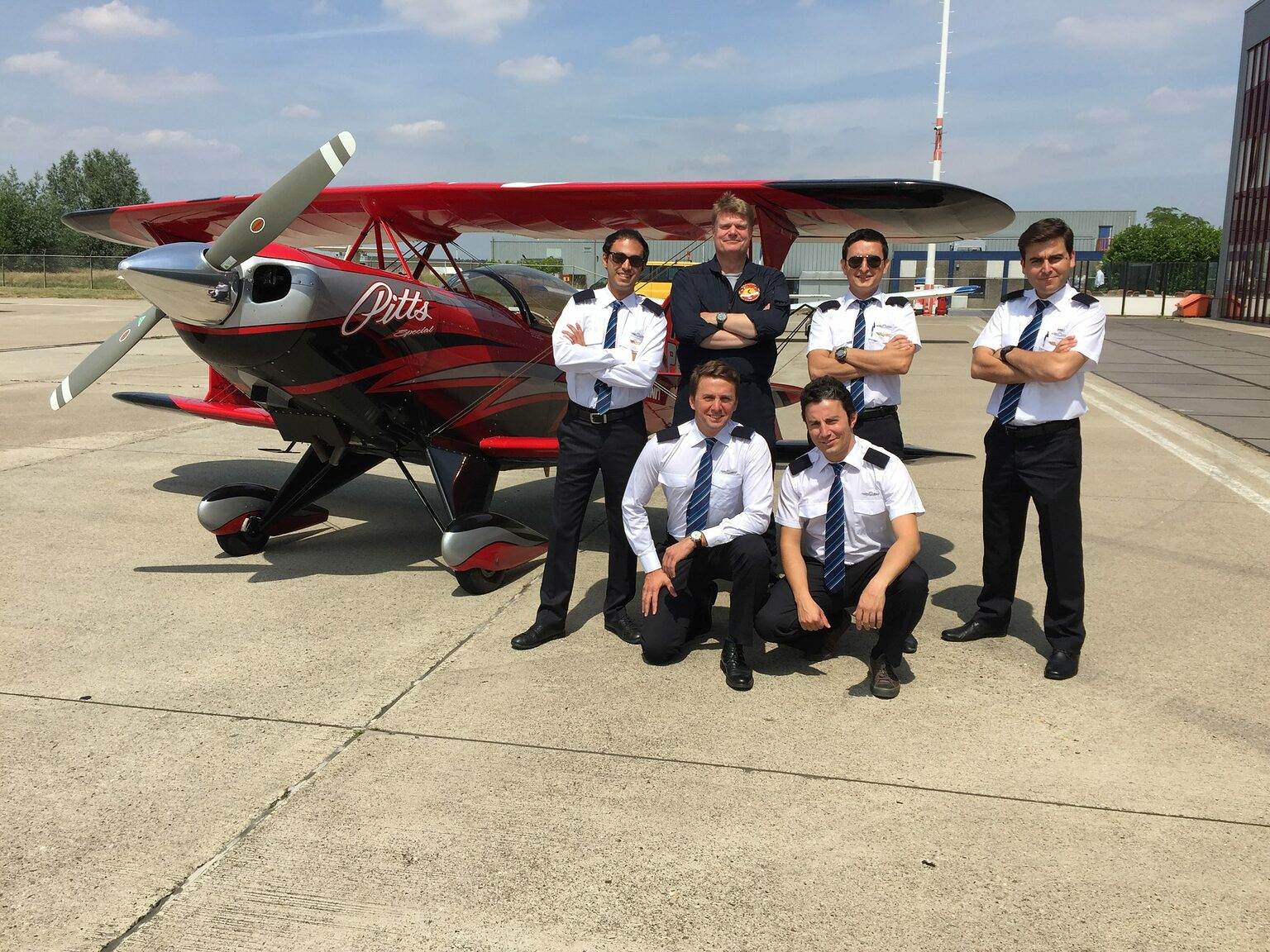
Upset Prevention and Recovery Training (UPRT)
What is UPRT?
UPRT stands for aircraft ‘Upset Prevention and Recovery Training’ and constitutes a combination of theoretical knowledge and flight training with the aim of providing flight crew with the required competencies to both prevent and to recover from situations in which an aircraft unintentionally exceeds the parameters for line operation or training (aircraft upsets).
Basic UPRT exercises are integrated in all PPL, CPL and MPL training courses.
Advanced UPRT includes at least 5 hours of theoretical instruction as well as at least 3 hours of dual flight instruction in an aircraft, with the aim to enhance the student’s resilience to the psychological and physiological aspects associated with upset conditions.
Class- or type-related UPRT during class or type rating training addresses the specifics of the relevant class or type of aircraft.
At the forefront of UPRT development
The SKY academy ATO was at the forefront of the development of UPRT for other (integrated) flight schools and CAA-NL. More than 10 years, hundreds of hours of hands-on UPRT experience.
SKY academy is appointed by the CAA-NL to train UPRT-instructors for other flight schools as well to provide yearly mandated recurrency checks.
Each training program is focused on Basic Flying Skills, UAS (Undesired Aircraft State) avoidance and recovery.
SKY academy incorporates SOP’s (Standard Operating Procedures) directly derived and based upon the latest developments in the field of CRM (Crew Recourse Management), both multi-crew as single-pilot.
EASA+
ICAO (and EASA) defined Core Competencies to address all pilot licenses, and are therefore a useful starting point. However, they do not address the pilots’ profession as such, and therefore need to be complemented:
- For a successful airline pilot career, additional competencies are required, such as resilience, operational behaviour, and professionalism.
- In addition digital skills and profound knowledge and application of technology – which in today’s professional reality are essential.


Aircraft
SKY academy has 3 superb and totally unique training aircraft dedicated to our UPRT programs.
All our aircraft have full dual controls, equipped with EFIS, and (except for the Pitts S-2B) Flight Director, Autopilot and electric trim.
UPRT-Basic
The brand-new Tecnam P-Mentor is our latest addition to our fleet. The aircraft is EASA CS-23, AMDT.5 approved with EASA.A.006 TCDS, and has been subjected to spinning test to demonstrate recovering from after initiation of the first control action for recovery. This compliance is demonstrated with all limit configuration in terms of flap position, center of gravity, power and adverse control inputs.
The Ballistic Recovery System is part of the elaborate safety package of this airplane. BRS can be used as part of the risk mitigation features in the remote case of departure from controlled maneuvers towards loss of control.
Moreover, the increased MTOW and load factor compared to other single engine aircraft typically used for basic instruction. This can allow, as part of risk mitigation features, to takeoff with a mass lower than MTOW, with reduced fuel in the tanks and increased structural margins.
UPRT-Advanced / UPRT-Instructor
You will be flying a high-performance 310 BHP Aviat Pitts S-2B with full dual controls and EFIS. After each spin it takes no more than two minutes to climb back to altitude. The Pitts is capable of doing all types of spins; safe, predictable and totally in control. Furthermore, the Pitts is approved for sustained inverted flight. It flies legally within weight and balance limitation whilst carrying the legal amount of (reserve, trip, alternate and contingency) fuel.
Our modified Pitts S-2B has surprisingly similar flight characteristics as a Boeing 737; namely the pitch attitude for climb (18*), a rate of climb of 2600 fpm, and flight controls positioned quite similar to the RH seat of the Boeing flight deck.
The Pitts S-2B is certified for -3 and +6 G’s. Most importantly, unlike our competitors, the aircraft is uniquely certified for sustained inverted flight. Only this airplane can expose students to the physiological and psychological impacts of severe upset situations in realistic scenarios. The importance of doing this for real cannot be overemphasised.
MCC UPRT
In a multi-crew environment, only in a twin-engine aircraft equipped with all the systems of a small airliner can real-life upset scenario’s be created and rehearsed. Our multi-role Piper Seneca PA-34 is the ultimate platform to provide your crews the training needed to build the required resilience to recover from Undesired Aircraft State in a predictable and methodical fashion.

UPRT Maneuvers
Alternating Lines
Positive
- +30°, -20°
- +45°, -30°
- +60°, -45°
Inverted
- -30°, +20°
- -45°, +30°
- -60°, +45°
Turning exercises
- Dutch Roll
- Dutch Yaw
- Steep turns with:
- No slip
- Slip
- Skid
- Spiral Dive
- Spiral Dive entries
- Spiral Dive vs spin
- Turn to Final Incipient Spin
- Forbidden Turn
- Knife-edge turns
Wing-dip exercises
- Whifferdills / Falling Leaf
- Full stall: wing-dip corrections with ailerons
Spin exercises
- Spin entries:
- forward slip
- (accelerated) stall
- forward slip
- Spin – Incipient
- Spin – developed
- Spin dynamics (effect of flight controls)
- Spin recovery variants and techniques
- Flat Spin
- Accelerated Spin
- Inverted Spin
Stall exercises
- Power on stall, introduction wing dip
- Power off stall & recovery techniques
- Stalls in landing configuration
- Accelerated stall
- Climbing turn stall
- Descending turn stall
- Slipped stall
- Deep stall / Mush flight
- Level slip stall
- Level skid stall
- Inverted stall
Slip & Skid
- Forward slip
- Side slip
- Descending skid versus Climbing skid
- Level skid stall
Inverted Flight
- Inverted flight
- Inverted turns
- Inverted power off stall
- Inverted spin – incipient
EASA recovery templates
- Wake Turbulence Recoveries
- Flight with Control Restrictions
- Human Factors
- Orientation
- Startle & Surprise
- Panel scanning
- TEM
- CRM
